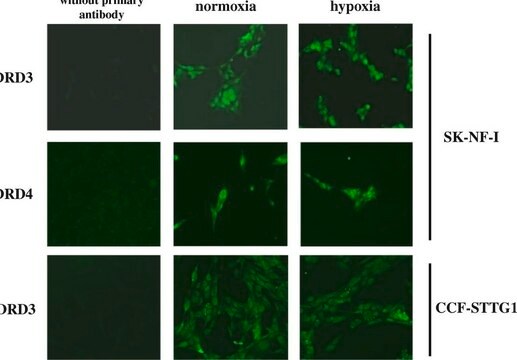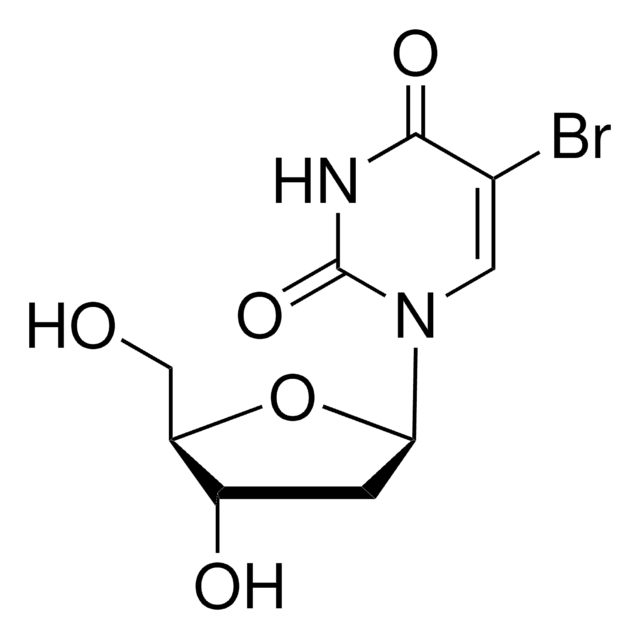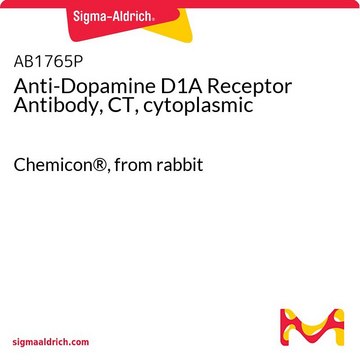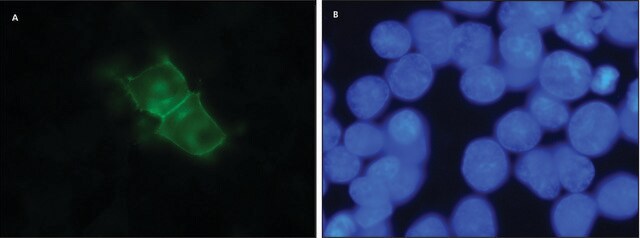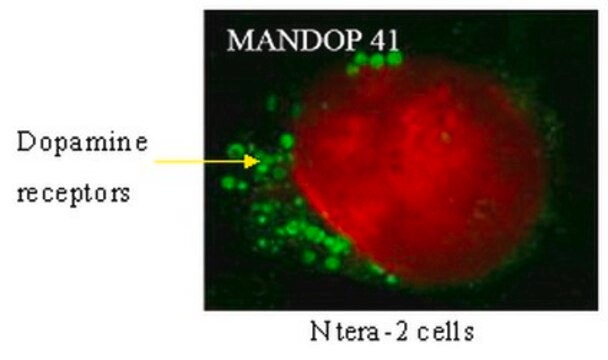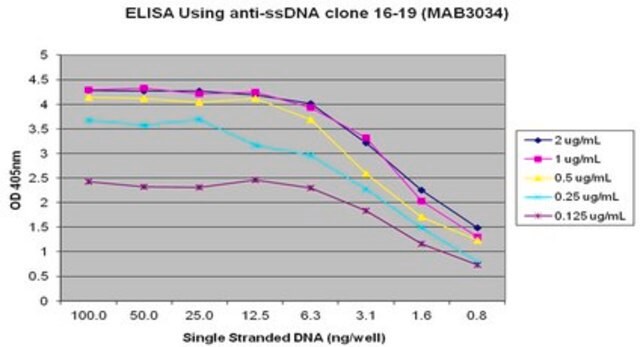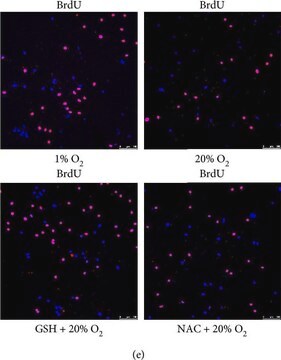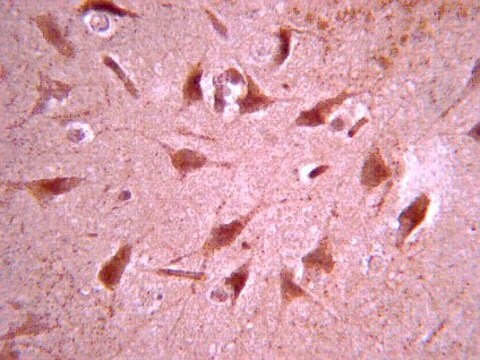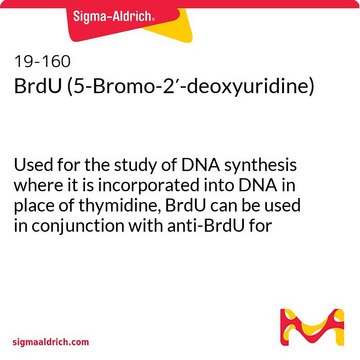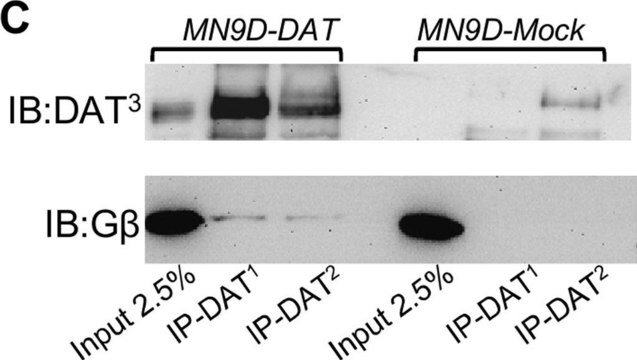AB1784P
Anti-Dopamine D1A Receptor Antibody, 4th Extracellular Domain
Chemicon®, from rabbit
About This Item
Produtos recomendados
fonte biológica
rabbit
Nível de qualidade
forma do anticorpo
affinity purified immunoglobulin
tipo de produto de anticorpo
primary antibodies
clone
polyclonal
purificado por
affinity chromatography
reatividade de espécies
rat
fabricante/nome comercial
Chemicon®
técnica(s)
ELISA: suitable
immunohistochemistry: suitable
western blot: suitable
nº de adesão NCBI
nº de adesão UniProt
Condições de expedição
dry ice
modificação pós-traducional do alvo
unmodified
Informações sobre genes
human ... DRD1(1812)
Especificidade
Imunogênio
Aplicação
Western blot: 1-10 μg/mL (Chemiluminescence technique). An antibody made to this peptide has been shown to detect 2 proteins of 50 and 75 kDa in solubilized hippocampal membranes. The 75 kDa band was not visible in striatum (Huang, 1992; O′Connel, 1995). Approximately 100-400 μg of protein/lane should be loaded to visualize the 75 kDa band (Huang, 1992; O′Connel, 1995) that is present in relatively small amounts.
ELISA: 0.5-1.0 μg/mL using 1 μg/mL of control peptide per well.
The immunogen peptide is available (Cat. No. AG266) for use in ELISA or antibody blocking studies. AG266 is not recommended for use as a western blot positive control.
Optimal working dilutions must be determined by end user.
Neuroscience
Neurotransmitters & Receptors
forma física
Armazenamento e estabilidade
Nota de análise
POSITIVE CONTROL: rat striatal membranes (western blot)
Outras notas
Informações legais
Exoneração de responsabilidade
Não está encontrando o produto certo?
Experimente o nosso Ferramenta de seleção de produtos.
Código de classe de armazenamento
10 - Combustible liquids
Classe de risco de água (WGK)
WGK 2
Ponto de fulgor (°F)
Not applicable
Ponto de fulgor (°C)
Not applicable
Certificados de análise (COA)
Busque Certificados de análise (COA) digitando o Número do Lote do produto. Os números de lote e remessa podem ser encontrados no rótulo de um produto após a palavra “Lot” ou “Batch”.
Já possui este produto?
Encontre a documentação dos produtos que você adquiriu recentemente na biblioteca de documentos.
Nossa equipe de cientistas tem experiência em todas as áreas de pesquisa, incluindo Life Sciences, ciência de materiais, síntese química, cromatografia, química analítica e muitas outras.
Entre em contato com a assistência técnica